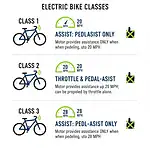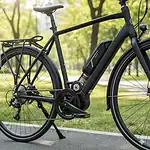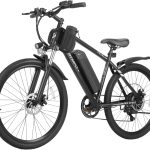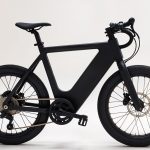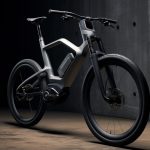Starting Your E-Bike Journey: Understanding the Basics
Buying your first electric bike can feel overwhelming—there’s a lot of buzz and even more models to choose from.
You may be wondering:
- Will this fit my commute or weekend adventures?
- What battery or motor do I need?
- Is this a long-term investment—or just a passing trend?
You’re not alone. Nearly every first-time buyer faces the same concerns about range, value, and safety. This updated guide walks you through everything—from defining your needs to decoding features—so you can buy confidently and enjoy the ride for years to come.ough answering these questions and empower you to make a savvy, satisfying choice.

🚴♀️ Step 1: Assess Where and How You’ll Ride
Before comparing specs, take a moment to understand you.
Your riding habits determine 80 % of the right choice.
Self-Assessment Checklist
- Will you mostly ride in the city, on trails, or for long commutes?
- Do you need to haul cargo, kids, or groceries?
- Is space limited—will you fold or store the bike indoors?
- What’s your typical distance and terrain (flat, hilly, rough)?
- How much weight can you comfortably lift or push uphill?
🧭 Pro Tip: Picture one full week of riding—commutes, errands, weekend fun. Your “must-have” list will appear naturally.
⚙️ Step 2: Key Features to Consider
🔋 Battery & Motor
- Battery Capacity (Wh): Higher means longer range. Look for 500 Wh or more for daily commuters.
- Motor Type:
- Hub motors = simple and affordable.
- Mid-drive motors = efficient, great on hills, smoother power delivery.
Featured Snippet:
Most electric bikes use hub or mid-drive motors powered by lithium-ion batteries rated in watt-hours (Wh). The higher the Wh, the farther you can ride before recharging.
Learn more in our battery & range basics guide for clear Wh and voltage comparisons.
🔄 Range
Manufacturers often list “ideal” range—but wind, hills, and assist level change everything.
Expect 70–80 % of the advertised distance in real conditions.
⚖️ Bike Weight
Lighter models (under 50 lb) are easier to lift, especially if you store indoors or use transit.
🛡️ Safety Features
Look for:
- Hydraulic disc brakes
- Integrated lights
- Reflective sidewalls or fenders
- Puncture-resistant tires
New to e-bike laws? Read our Class 1/2/3 guide to see what’s allowed in your state.
🧾 Warranty & Support
Choose brands with transparent support. A 2-year warranty on electronics is the current standard; anything less is a red flag.
💰 Step 3: Understanding Pricing and Value
| Tier | Price Range | Ideal For | Highlights |
|---|---|---|---|
| Entry-Level | $1 000 – $1 500 | Short commutes, basic needs | Light motors, simple displays |
| Mid-Range | $1 500 – $3 500 | Balanced power & comfort | 500 Wh+, hydraulic brakes |
| Premium | $3 500 + | Long range, advanced tech | Smart systems, torque sensors |
💡 Pro Tip:
Compare total value, not just price—check if fenders, racks, or lights are included and whether the brand offers local service.
🧩 Step 4: Test-Riding and Online Buying Tips
🚲 Test Ride (if possible)
Visit a certified dealer. Focus on:
- Power delivery smoothness
- Braking feel
- Seat and handlebar comfort
- Ease of mounting/dismounting
A five-minute ride tells you more than hours of research.
💻 Buying Online
When local shops are limited:
- Check for trial periods or return windows.
- Read verified user reviews—look for experiences after 3+ months of use.
- Confirm responsive customer support (email or chat).
🧠 Real Example:
One reader from Oregon shared that her 20-mile hilly commute became stress-free after switching from a 250 W hub to a 500 W mid-drive model—proof that matching specs to real terrain matters more than brand names.
🔧 Step 5: Maintenance and After-Purchase Support
Basic care keeps performance strong:
- Keep the battery charged between 30–80 %.
- Inflate tires to correct PSI weekly.
- Clean and lubricate the chain monthly.
- Schedule an annual service for firmware updates and brake checks.
Before purchasing, ensure your brand stocks replacement batteries—availability can vary after 3–5 years.
🪜 Step-by-Step: How to Choose Your Perfect E-Bike (Checklist)
- Define your goal: commuting, fitness, or adventure?
- Set your budget: include accessories like helmets and locks.
- Decide the class: Class 1 for trails, Class 3 for fast commutes.
- Pick your motor type: mid-drive for torque, hub for simplicity.
- Check battery Wh vs. range needed.
- Verify warranty & parts access.
- Take a test ride or read long-term reviews.
- Buy from a brand with responsive after-sales support.
🎯 If you follow this list, you’ll narrow hundreds of models down to 3–5 solid candidates quickly.
🧾 Real-World Buying Tip: Plan for Accessories
Budget for essentials:
- Helmet, U-lock, and lights.
- Cargo rack or panniers if commuting.
- Floor pump and basic toolkit.
A well-equipped setup saves frustration later and improves resale value.
❓ FAQs
Most e-bikes travel 25–60 miles per charge depending on battery size, terrain, and assist level. Commuters using eco-mode get the longest range.
For city or flat rides, rear-hub motors are affordable and smooth. For hills or heavy loads, mid-drives give better torque and balance.
Yes. Use lights, obey traffic laws, and service brakes regularly. Studies show e-bike accident rates are similar to regular bikes when riders follow standard cycling rules.

